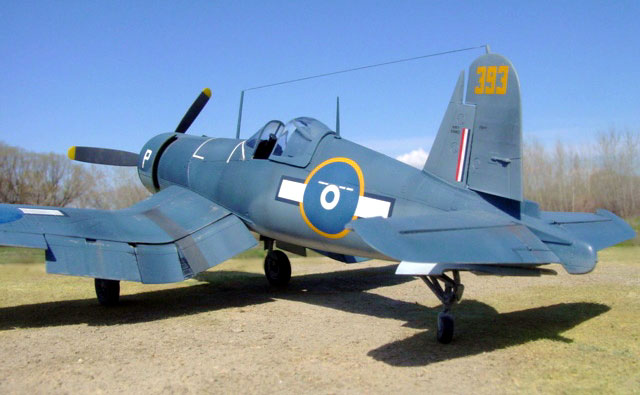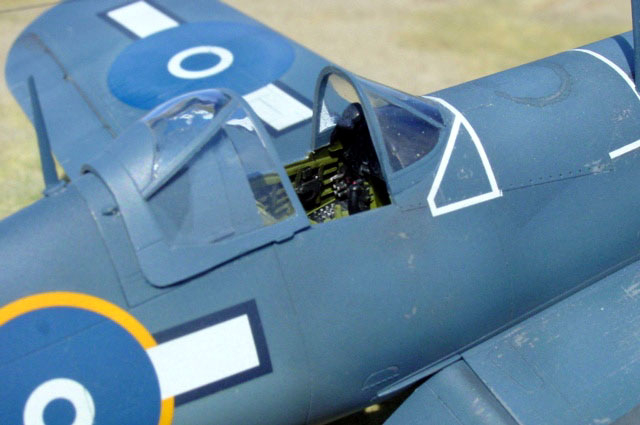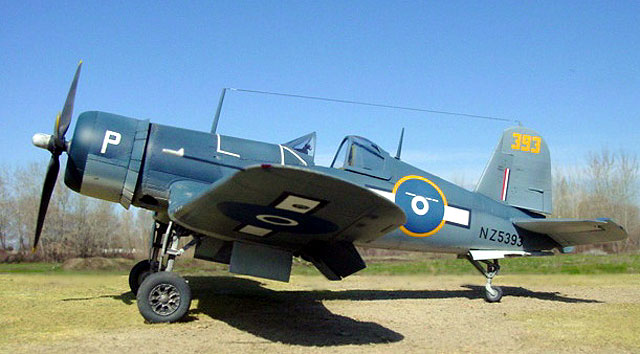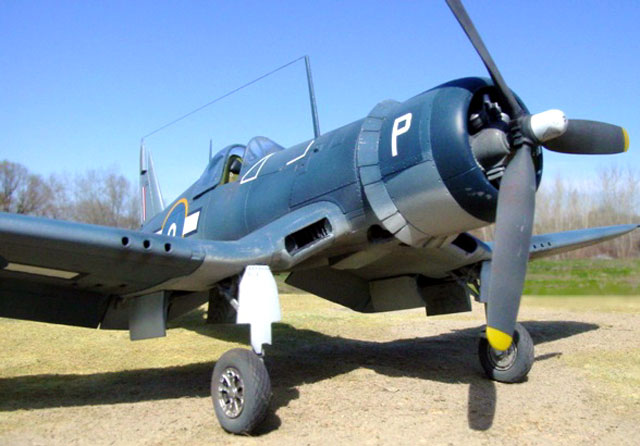|
Vought F4U-1A Corsair
by
Ian
Robertson
 |
|
Vought F4U-1A Corsair
25 Squadron RNZAF, Los Negros, January 1945 |

Tamiya's 1/48
scale F4U-1A Corsair is available
online from Squadron.com
I built Tamiya's 1/48 F4U-1A Corsair in the markings of a Royal New Zealand
Air Force aircraft from No. 25 Squadron stationed at Los Negros Island in
January 1945.
Tamiya's F4U kits will be familiar to many modelers and are generally
considered one of the best, if not the best, Corsair offerings in 1/48 scale.
Beyond its superb design, notable features of the kit are the lowered flaps, an
option for open cowls and foldable wings.
I added brass seatbelts from Reheat, and weighted resin tires from True
Details.

The only other modifications I made to the model were removal of the tail
hook (this aircraft was island based), repositioning of the control surfaces on
the tail, and removal of the step on the right wing flap.
This final modification was achieved by gluing a wedge of plasticard in the hole
and sanding it flush with the surface of the flap.
|
Painting, Markings and
Weathering |
I first sprayed the model with an undercoat of SNJ aluminum metallizer over
the wings and nose. Using Polly Scale acrylics I then painted the model in the
typical US Navy scheme of non-specular sea blue and semi-gloss sea blue upper
surfaces, intermediate blue sides and lower outboard wing panels, and white
lower surfaces. To simulate a faded appearance to the upper surface paint (which
is expected given the sun-baked climate on south Pacific islands) I diluted the
upper surface colors with 25% neutral gray.

The propeller and the walkways on the wing were painted with dark gray rather
than black, both for scale effect and to create a faded appearance. The wheels
were also painted dark gray and touched up with light brown chalk pastels to
give them a further faded appearance.
To weather the rest of the model I lightly sanded areas of the upper surfaces to
expose the aluminum metallizer underneath. Sanding was done primarily on the
leading edges and upper surfaces of the inboard wings as well as on the cowl. It
was not my intention to remove large amounts of surface paint, rather to lightly
scuff the surface to simulate a worn effect caused by debris (coral sand, grit)
flying back from the propeller wake.
AeroMaster decals (SP48-10) were used for this project. Once the RNZAF markings
were applied and the final dull coat applied I sprayed a thinned mixture of US
Desert Storm Sand over the model to help fade the national markings.
The pictures were taken outdoors using a SONY digital camera.

A "blur" tool from Adobe Photoshop 6.0 (Macintosh) was used to dissolve the
base into the background.
Click the thumbnails below to view
larger images:
Model, Images and
Article Copyright © 2002 by Ian
Robertson
Page Created 12 May 2002
Last updated 04 June 2007
Back to HyperScale Main Page
Back to Features Page |
Home
| What's New |
Features |
Gallery |
Reviews |
Reference |
Forum |
Search